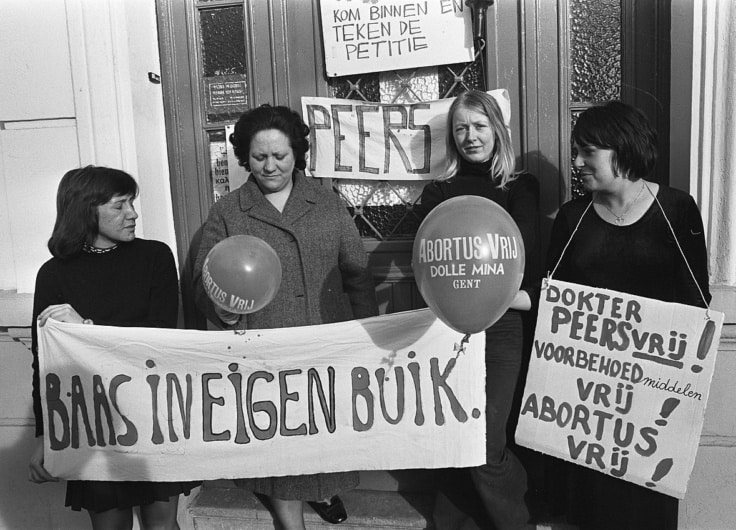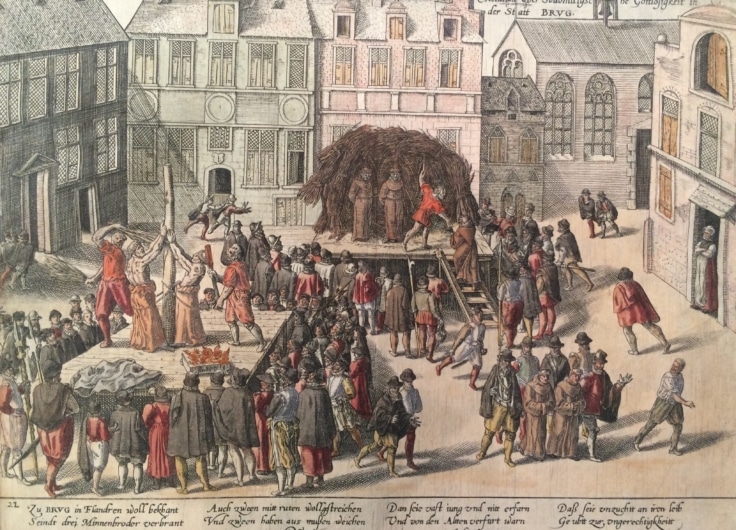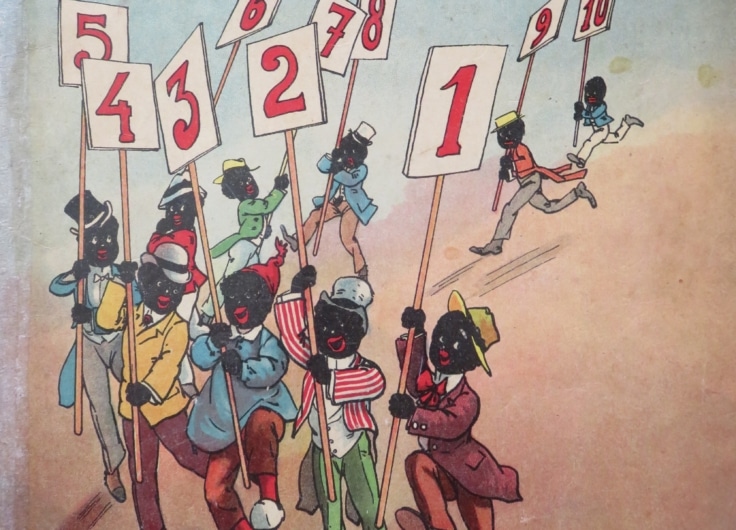Sex In The Cinema? Censorship In The Netherlands, Deleted Scenes In Belgium
The Netherlands was long considered more progressive in cinema than Belgium thanks to Blue Movie, Mira and Turkish Delight. Those films made a splash in the 1970s with nudity and sex. Surprisingly enough, film censorship was more robust in the Netherlands than in Belgium.
Ghent, Woodrow Wilsonplein 4, Saturday afternoon, January 24, 1976. With a great show of force, the public prosecutor and the commissioner of the judicial police invaded the Select Cinema. The gentlemen of the court had ordered the screening of the film A History of the Blue Movie (1970) to cease. After fifteen minutes they left the cinema amid intense boos, having confiscated film reels and projection equipment.
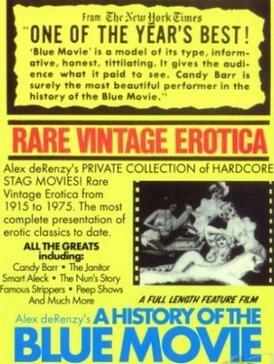
The screening of A History of the Blue Movie was set to be one of the highlights of the third edition of the Ghent Film Event. The organisers of this adventurous film festival promoted the American-made film as a documentary about the history of pornographic cinema. The film showed a montage of old, explicitly pornographic film footage and included pseudoscientific commentary. One of the festival founders was the Dutch twenty-something Ben ter Elst who, after many wanderings, ended up in Ghent where he opened the controversial alternative Cinema Studio Skoop in 1970. He was probably familiar with A History of the Blue Movie
in the Netherlands, where the film had already been shown a year earlier.
The seizure of the film in Ghent made it into the national press, especially when the judge ruled in his judgment that this ‘sexually offensive’ film full of ‘coitus, anal penetration’ and ‘prolonged scenes of fellatio filmed in close-up’ posed a threat to public morality. Ben ter Elst, together with his companion Dirk De Meyer, was sentenced by the criminal court to a suspended prison sentence and a fine – a sentence that was confirmed a few months later by the Ghent Court of Appeals. The judge did not accept the defence attorney’s argument that De Meyer and ter Elst had cherished purely cultural and historical ambitions with A History of the Blue Movie.
There were wild stories about buses full of Belgian cinephiles who crossed the border to watch daring films in the Netherlands
In Flemish left-wing and liberal circles, the report of the seizure, fines and prison sentences for showing a film seemed to prove once again that the Netherlands was a model country when it came to ethics and censorship. So much more was available in the land of their northern neighbours – a claim proven by the wild stories about buses full of cinephiles who crossed the border to watch A History of the Blue Movie and other daring films.
The myth of tolerance
The image of the Netherlands as a tolerant and progressive film country was, in fact, a myth. The screening of A History of the Blue Movie had certainly caused its share of commotion there. In some Dutch cities, film associations had only dared to project the film in private for those who were willing to purchase a twenty-four-hour membership card. This strategy of ‘private screenings’ had previously been used to circumvent public indecency legislation. It was also a technique to avoid the strict control of the Central Commission for Film Inspection (CCF).
After all, the Cinema Act had been in force in the Netherlands since 1926. This law, which aimed to combat the potential moral and social dangers of cinema, led to the establishment of the CCF. All films considered for public screening in the Netherlands had to be evaluated in advance by the committee, which usually passed strict judgments and certainly deserved its reputation for censorship. They could impose restrictions on distributors, demanding that they cut out offensive images or scenes if they wanted to put their films into circulation. The CCF also imposed age limits, with eighteen years as the limit to protect children and young adolescents.
It was striking that the Dutch film inspection, unlike the Belgian, could ban films
It was striking that the Dutch CCF, unlike the film inspection body in Belgium, could ban films. This happened regularly, often to keep immoral films with erotic themes out of Dutch cinemas. Until the 1960s, the Dutch commission continued to ban or cut films on the grounds of nudity and eroticism. The natural victims were films that promoted nudism such as the British-made The Nudist Story
(1959), films showing striptease acts such as the French compilation film Mademoiselle Strip-tease (1959), or films with titles such as La Danseuse Nue (The Nude Dancer, 1952), which told the story of a music hall dancer, and was promptly banned on the grounds of ‘nudity’ and because the film had little ‘content’.
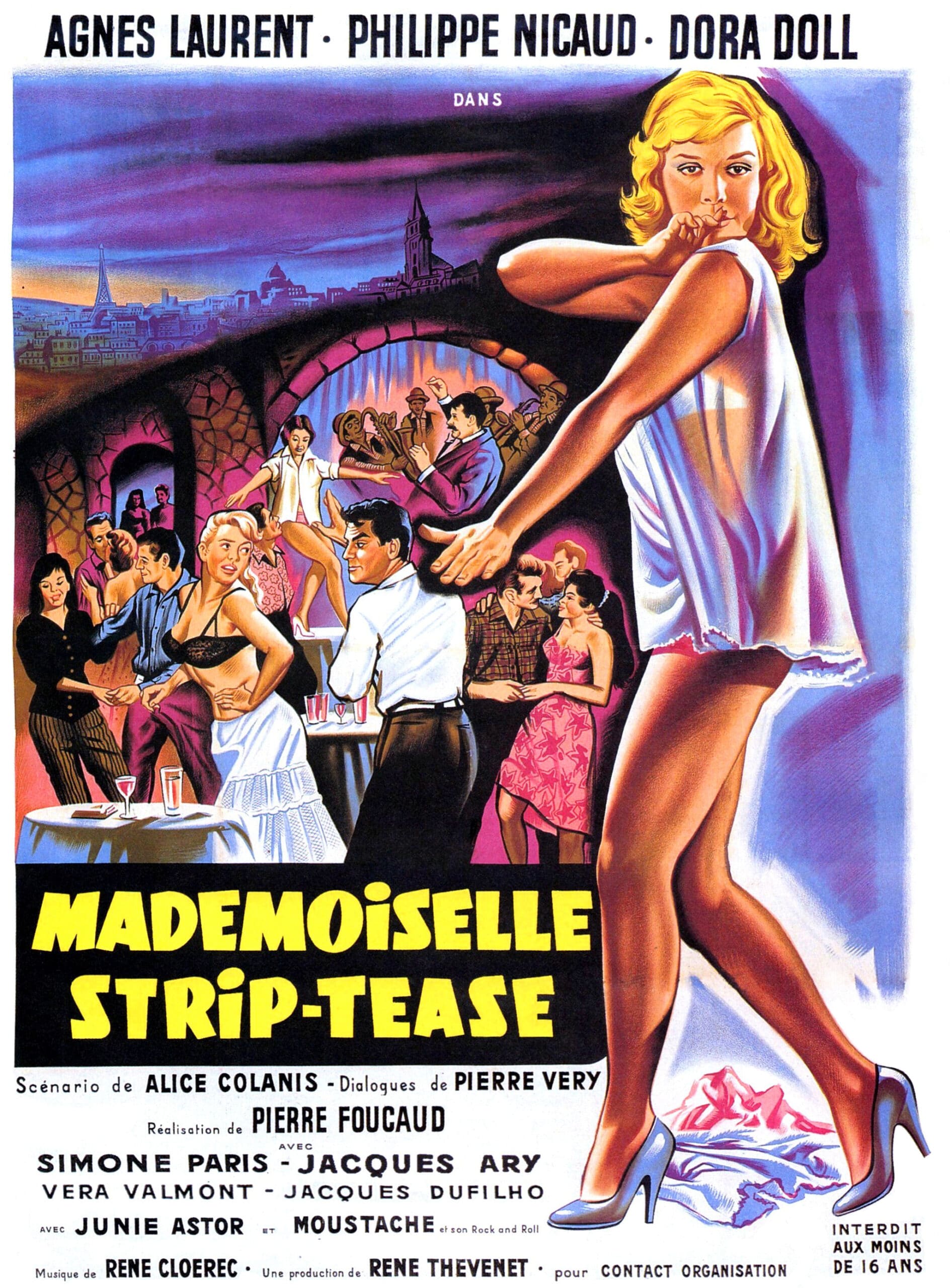 The natural victims of the film inspection were films showing striptease acts such as the French compilation film 'Mademoiselle Strip-tease' (1959).
The natural victims of the film inspection were films showing striptease acts such as the French compilation film 'Mademoiselle Strip-tease' (1959).French films often fell victim to the committee. A well-known case is Les Amants (The Lovers, 1958), by Louis Malle. This film, which starred Jeanne Moreau and showed in an infamous scene how passionately a woman could enjoy oral sex, had caused a wave of outrage and protest in France and many other countries. In the Netherlands, Les Amants was submitted to the committee three times but was rejected each time because of scenes and statements that were considered obscene.
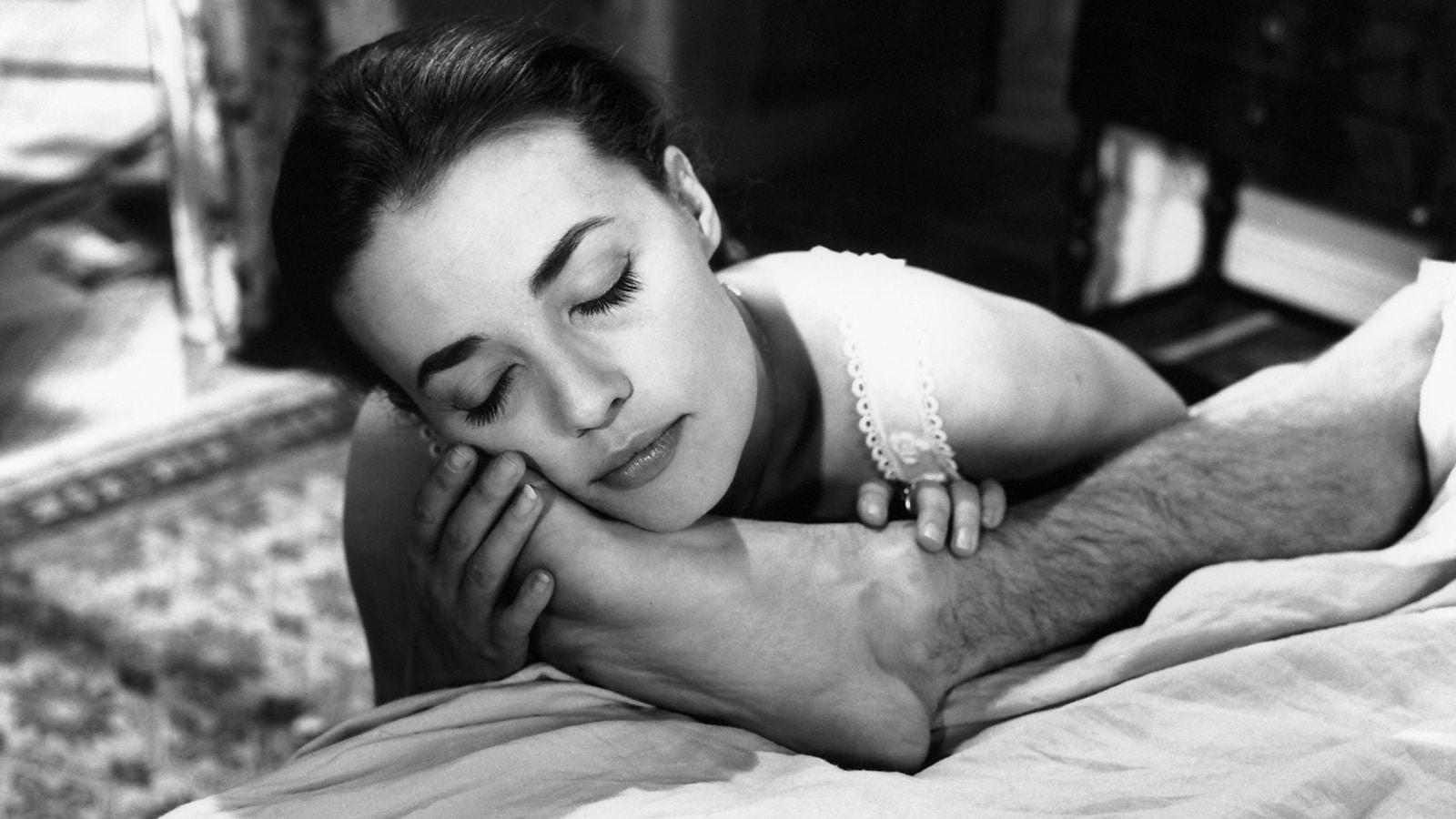 'Les Amants' (1958) was submitted to the committee three times but was rejected each time because of scenes and statements that were considered obscene.
'Les Amants' (1958) was submitted to the committee three times but was rejected each time because of scenes and statements that were considered obscene.The committee did allow the re-submission of objectionable films on appeal. La Femme et le Pantin (released in the UK with the title A Woman Like Satan, 1959), starring a challenging Brigitte Bardot, was only approved after three cuts and with a strict age limit (eighteen years).
Even classic Hollywood films that are well-known now did not always pass inspection unscathed. Howard Hawks’ musical comedy Gentlemen Prefer Blondes (1953) starring Marilyn Monroe and Jane Russell was first banned absolutely on the grounds that it was ‘shameless and immoral in content and design’. Because Fox wanted to release the potential blockbuster in the Netherlands, the distributor appealed. There, the inspection committee decided the film could be screened after the removal of some ‘ambiguous statements’ and the imposition of an age limit of eighteen years.
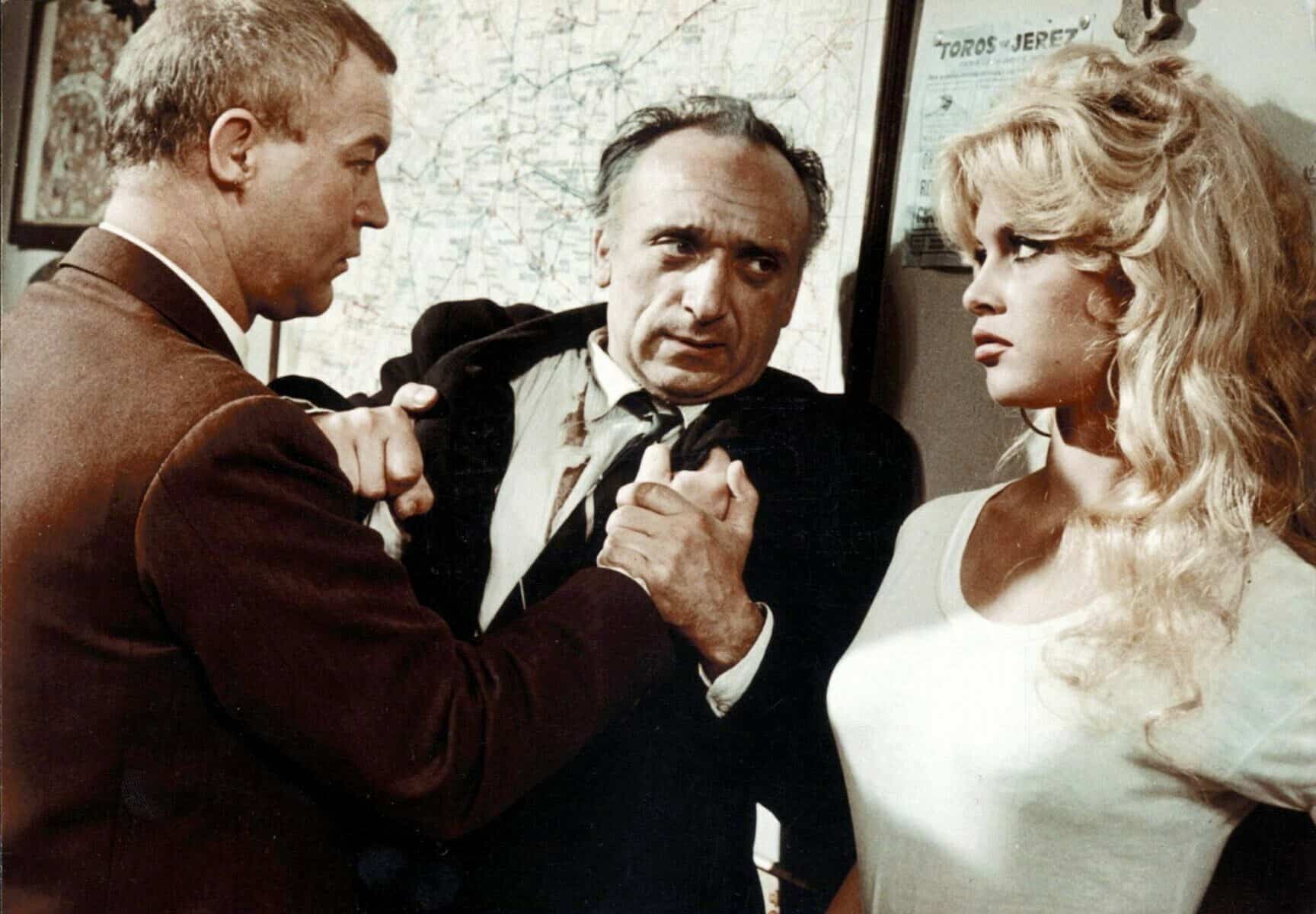 'La Femme et le Pantin' (1959), starring a challenging Brigitte Bardot, was only approved after three cuts and with a strict age limit.
'La Femme et le Pantin' (1959), starring a challenging Brigitte Bardot, was only approved after three cuts and with a strict age limit.Another classic Hollywood picture starring Jane Russell, The French Line (1953), was first banned because the film ‘seemed to be constructed to exhibit the attractiveness of the actress’s body.’ The film did not survive re-assessment due to the ‘many scenes of nudity, undressing, and erotic, titillating and challenging scenes’.
Barbed freedom
In Belgium, the legislation surrounding the public showing of films seemed to be much more liberal. In 1920 a legally sophisticated law that valued artistic freedom had been passed. Unlike almost all other countries, where censorship of films was the norm, the Belgians wanted to avoid censorship of films, in line with their opposition to censorship of the press. Yet they did want to respond to the social demand to restrain cinema because, in the public debate, cinemas were branded as dangerous, unsavoury places where children were exposed to morally reprehensible films full of violence, horror and sex.
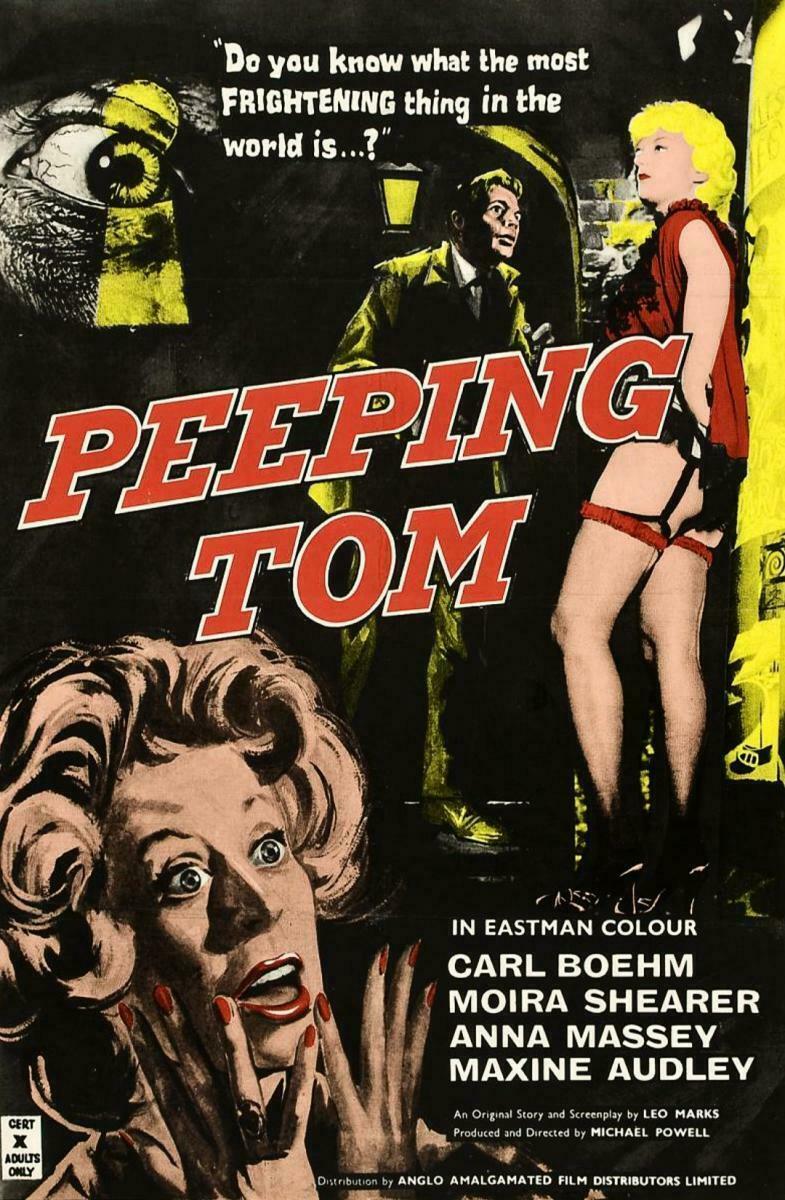
The Belgian film law was a work of beautiful and pragmatic simplicity. The rule was that children under the age of 16 were not allowed to enter cinemas unless the film being screened had previously been checked by a film inspection committee. This meant, that in Belgium, unlike in the Netherlands, there was no obligation to evaluate films made for adults. Films with adult themes could be shown freely and they frequently were. An estimated one-quarter of all films shown in Belgium were not censored but, instead, were automatically labelled “children not allowed”. As a result, countless films that had been censored elsewhere could be screened in Belgium.
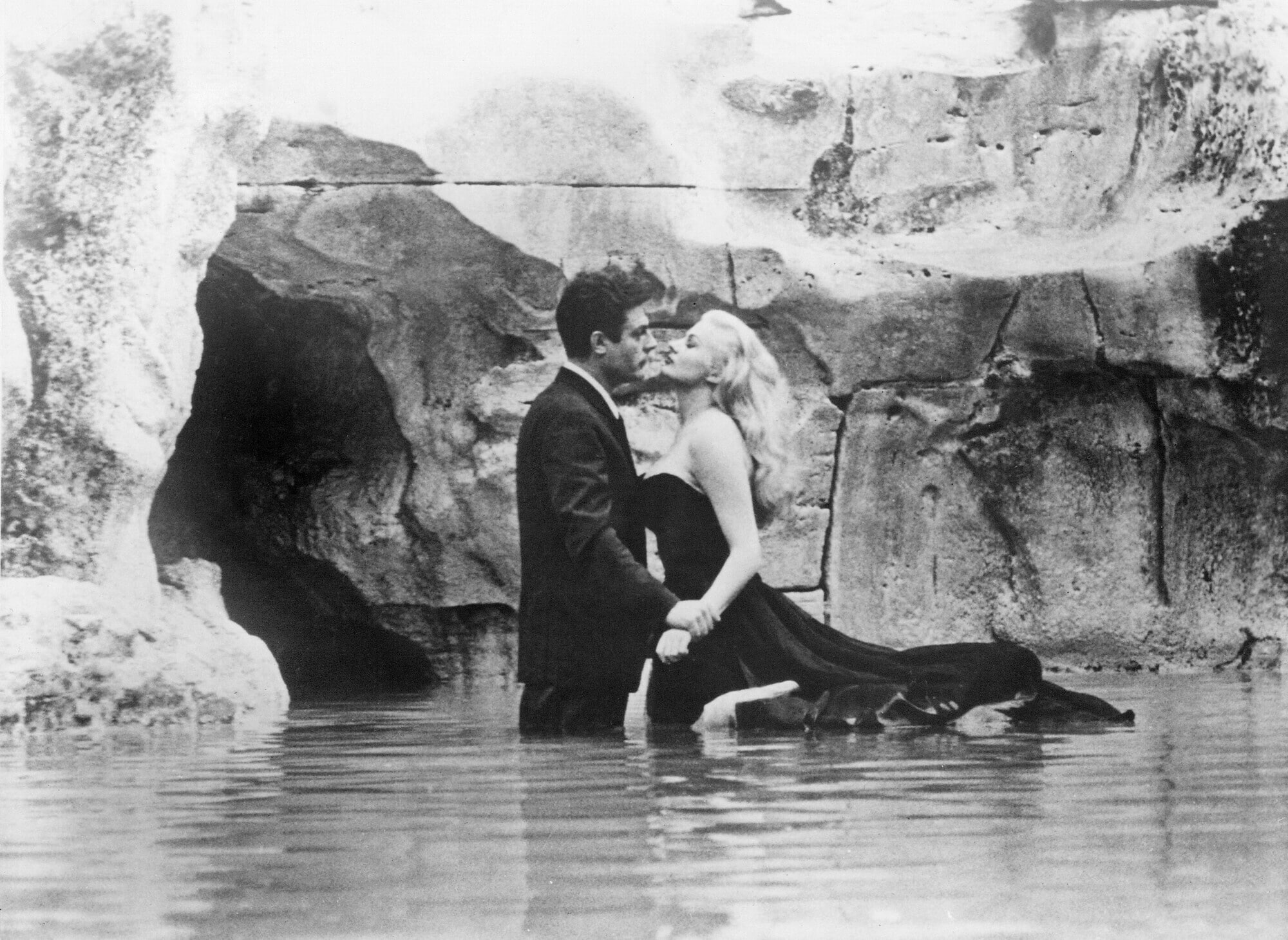 'La Dolce Vita' (1960) could be projected for people over eighteen, but only after four changes, including removing the famous striptease scene.
'La Dolce Vita' (1960) could be projected for people over eighteen, but only after four changes, including removing the famous striptease scene.For example, Les Amants was shown freely with its ‘no children allowed’ label – but also with significant criticism and many sharp comments in the press, both of which only contributed to the immense success of the film. The same applied to other films such as the British–made Peeping Tom (1960), Lolita (1962) by Stanley Kubrick and the American cult films Bonnie and Clyde (1967) and Easy Rider (1969). Federico Fellini’s bombshell La Dolce Vita (1960) was also released without restrictions in Belgium while being banned in the Netherlands for being ‘completely decadent’. After re-examination, however, a milder judgment was pronounced: La Dolce Vita could be projected for people over eighteen, but only after four changes, including removing the famous striptease scene.
This is not to say that Belgium was a wholly liberal film paradise. Belgian censorship still had teeth. First, for commercial reasons, distributors wanted to show their films to the largest possible audience, including families with children, so they often submitted their titles to the inspection committee, which was at that time – just like in the Netherlands – usually very paternalistic, demanding many changes and cuts. Popular films for the general public such as Tarzan films, westerns, historical blockbusters or James Bond films usually had to be altered in order to be shown with ‘children allowed’. A favourite target of the Belgian inspection commission was eroticism, and everything related to sex.
A second serious restriction was the application of legislation regarding questions of good morals. Since cinemas are public spaces, criminal laws regarding public indecency apply in Belgium, just like in the Netherlands. Images of people walking around naked in public or deliberately exposing their genitals could lead to police interventions such as the one at Ghent’s Cinema Select Event in January of 1976. And that intervention was not exceptional. During the second half of the 1960s and early 1970s, the number of judicial seizures of films increased significantly, often due to the portrayal of nudity and sexual acts.
Judicial action in Belgium was a conservative response to changing social views on sexuality
Judicial action was a conservative response to changing social views on sexuality and the exponential growth of the porn industry. Filmmakers at that time also went further than before, pushing the boundaries of what was and was not allowed. The list of films banned by the court is lengthy and includes titles such as La Tendresse (released in the UK as Tenderness,… My Fanny!), Obsessions Charnelles (Carnal Obsessions), Sweden in Love, Adolescence Pervertie (Perverted Adolescence), Sous le Signe de la Vierge
(Under the Sign of the Virgin) or Sex o’ Clock, but more ambitious and nuanced films also encountered restrictions. High-profile were films such as the socially critical Swedish film I am Curious (Yellow)
(1967), Dutch-German Wet Dreams (1974) and The Kingdom of the Sentences (1976) by the Japanese filmmaker Nagisa Oshima.
The battle for film ratings
From the 1980s onwards, the Belgian courts focused less on general cinema and instead took on the growing market for porn videos. But at this point the Belgian film inspection committee had more bark than bite. Although it would still demand deletions and changes until 1992, it became increasingly lenient in its judgment, even when it came to erotic films.
 In 2020, the commission for Belgian film inspection was overhauled to make way for the Dutch Kijkwijzer (Watch Wisely) classification system, which made the sector itself responsible for classifying films according to age appropriateness.
In 2020, the commission for Belgian film inspection was overhauled to make way for the Dutch Kijkwijzer (Watch Wisely) classification system, which made the sector itself responsible for classifying films according to age appropriateness.Inspection gradually became an anachronistic relic of the past, primarily because the committee had no say over films shown on television, video or, later, the Internet. This rather lax form of inspection suited the film sector, especially because films could not be banned in Belgium. In 2020, exactly one hundred years after the introduction of the Film Act, the commission for Belgian film inspection was overhauled to make way for the Dutch Kijkwijzer (Watch Wisely) classification system, which made the sector itself responsible for classifying films according to age appropriateness.
In the Netherlands, the struggle for the reform and eventual abolition of film inspection became much more intense, especially from the end of the 1960s. The highlight was the film Blue Movie (1971), which caused a lot of commotion internationally. Wim Verstappen and producer Pim de la Parra, the makers of that “sex film” (as Blue Movie was called) showed numerous images of naked men and women, explicit sex and even group sex.
The approval of 'Blue Movie' was a milestone in Dutch film history
In the Netherlands, Blue Movie was initially banned by the film inspection committee. Verstappen and de la Parra then drew up an extensive report in which they referred with provocative irony to an essay by the widely read Dutch writer Simon Vestdijk and to the deeper ‘socio-religious’ meaning of the film (particularly fuelled by the concept that people, in order to experience paradise on earth, must practice ‘genital sexuality’). The producers presented their report orally to the judges – obviously with some success, because Blue Movie was released after re-examination for screening without any changes or deletions for anyone over the age of eighteen.
The approval of Blue Movie was a milestone in Dutch film history, and not only because sex or ‘nudity films’ could then begin to be shown freely: Blue Movie also heralded the beginning of the end of film censorship. At first, the decision to reject the film sparked an intense debate, but when the film was subsequently approved without any cuts, the image of a rudderless committee emerged. By 1977, the CCF was finished and the film rating for adults was abolished, leaving only an age category system for children up to the age of sixteen. In 1986, the ban on pornography for adults was abolished. Then, in 2001, the Kijkwijzer system of self-regulation came into effect.
Blue Movie opened the way in the Netherlands to a flourishing production of films in which nudity and sexuality are openly portrayed. Additionally, the success of Blue Movie, Mira (1971), What Do I See!? (1971), Turkish Delight (1973) and other films would influence the tone of Dutch commercial cinema for years to come.
Literature
Daniel Biltereyst, Forbidden Images: The Hidden History of Film Censorship in Belgium, (Orig. Verboden beelden. De verborgen geschiedenis van de filmcensuur in België). Houtekiet, Antwerpen, 2020.


